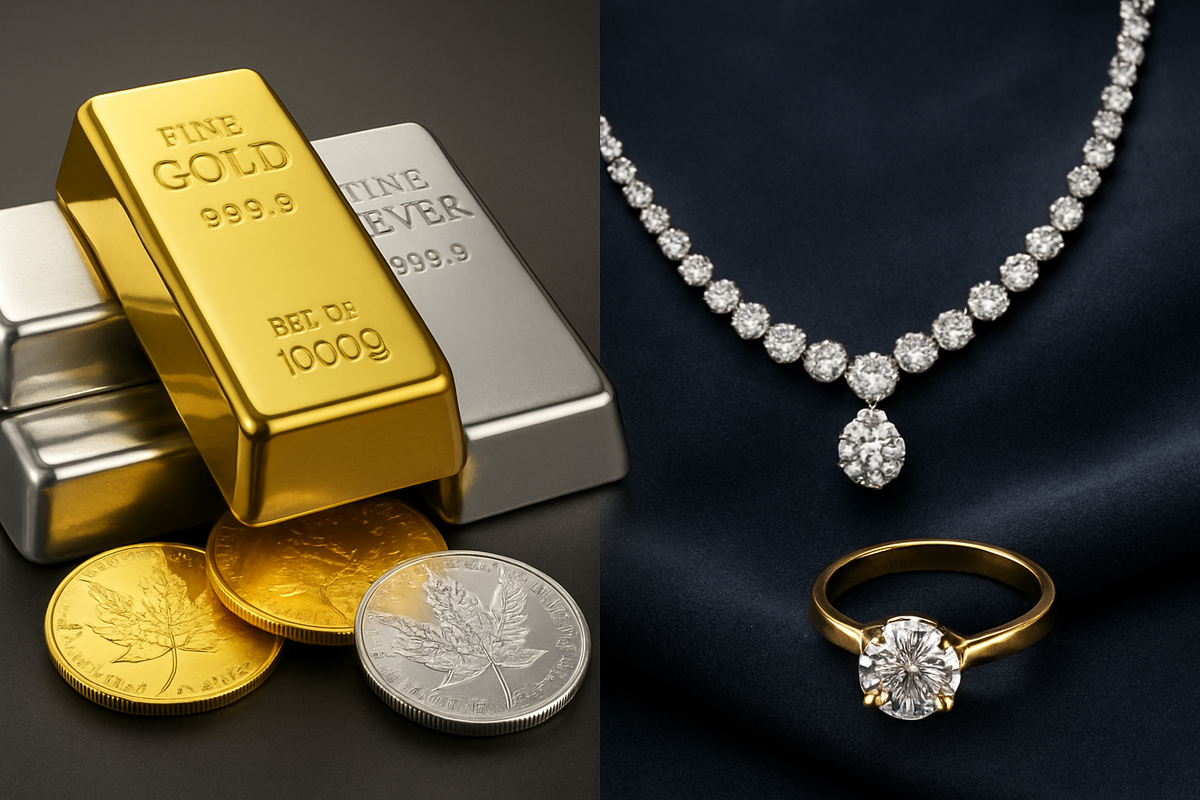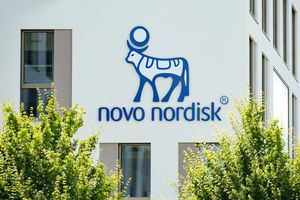
As of November 2025, investors navigating a landscape marked by persistent inflation and geopolitical uncertainties are increasingly scrutinizing traditional safe-haven assets. A pivotal discussion revolves around the efficacy of physical precious metals—gold and silver in the form of coins and bars—versus jewelry as viable options for wealth preservation. While both categories derive value from their precious material content, the U.S. Gold Bureau, among other experts, consistently highlights fundamental distinctions that dictate their suitability as investment vehicles. The current economic climate, characterized by significant surges in gold and silver prices, underscores the importance of understanding these differences for strategic portfolio allocation.
The Investment Landscape: Purity, Liquidity, and Purpose
The core of the debate lies in the primary purpose and market dynamics of each asset class. Physical precious metals, particularly investment-grade gold and silver coins and bars, are primarily valued for their intrinsic material content—their purity and weight. This fundamental characteristic ensures a high degree of market transparency and global recognition, making them highly liquid and easily tradable assets. Between 2021 and November 2025, gold prices have seen an impressive surge of approximately 125.7%, while silver has climbed by 116.3%, reflecting their robust performance amidst monetary expansion and inflationary pressures. These metals are celebrated for their role as a classic hedge against inflation, currency debasement, and economic uncertainty, often appreciating when traditional assets falter, thus serving as a crucial diversification tool in investment portfolios. However, they offer no income generation and incur storage and transaction costs. Silver, while also a precious metal, exhibits higher volatility due to its significant industrial demand, presenting both greater opportunity and risk.
In contrast, jewelry, while containing precious metals and often gemstones, serves a dual purpose: adornment and potential value retention. Its appeal lies in its aesthetic and sentimental value, often passed down as heirlooms. High-quality pieces from reputable designers, especially those featuring pure precious metals and rare gemstones, can indeed hold or even increase in value. However, the investment efficacy of jewelry is significantly hampered by substantial retail markups, which can often exceed three times the intrinsic value of the raw metal. Unlike investment-grade bullion, jewelry's value is heavily influenced by subjective factors such as design, craftsmanship, brand reputation, and prevailing fashion trends. Furthermore, the precious metals used in jewelry are typically of lower purity (e.g., 14K gold is 58.3% pure) compared to investment-grade bullion (e.g., 22 karats or higher). Resale values are generally much lower than initial purchase prices, as buyers often prioritize the metal content over design, making it a less efficient choice for pure investment purposes. Wear and tear from regular use can also diminish its value over time, and its susceptibility to fashion cycles makes its long-term investment potential less predictable than standardized bullion. As of November 2025, despite soaring metal prices, investment demand for precious metals is predominantly directed towards institutional products and physical bars, with experts suggesting gold jewelry be viewed more for its "use value" than as a primary investment.
Corporate Fortunes in the Balance: Miners, Dealers, and Luxury Brands
The divergent investment appeal of precious metals versus jewelry has significant implications for public companies operating in both sectors. Companies primarily engaged in precious metals mining, refining, and dealing stand to gain substantially from heightened investor demand for physical bullion. Major gold miners like Newmont Corporation (NYSE: NEM) and Barrick Gold Corporation (NYSE: GOLD), along with silver producers such as Pan American Silver Corp. (NASDAQ: PAAS) and First Majestic Silver Corp. (NYSE: AG), are direct beneficiaries of rising commodity prices and increased investment flows into their underlying assets. Streaming and royalty companies like Wheaton Precious Metals Corp. (NYSE: WPM) and Royal Gold, Inc. (NASDAQ: RGLD) also thrive as they provide financing to miners in exchange for a percentage of future production, effectively gaining exposure to rising metal prices without direct operational risks. Furthermore, the burgeoning interest in precious metals ETFs, such as the iShares Silver Trust (NYSEMKT: SLV) and SPDR Gold MiniShares Trust (GLDM), indicates a robust market for accessible precious metal investments, benefiting the fund providers and the underlying physical market.
Conversely, the luxury jewelry sector faces a more nuanced landscape. While high-end brands may benefit from the intrinsic value of the precious metals and gemstones in their creations, their primary revenue drivers are design, brand prestige, and marketing—elements that command significant premiums but are often lost in secondary market transactions. Luxury conglomerates like LVMH Moët Hennessy Louis Vuitton SE (OTC: LVMHF), which owns Tiffany & Co., and Compagnie Financière Richemont SA (OTCMKTS: CFRUY), parent to Cartier, may see continued demand from affluent consumers seeking luxury goods, but less so from those prioritizing pure investment returns. Retailers like Signet Jewelers Limited (NYSE: SIG), operating brands such as Kay Jewelers and Zales, might experience fluctuating demand tied more to consumer discretionary spending and fashion trends rather than direct investment flows into precious metals. Companies specializing in lab-grown diamonds, such as Adamas One Corp. (NASDAQ: JEWL), represent an evolving segment, but their investment proposition remains distinct from the intrinsic value of mined precious metals. The challenge for jewelry companies lies in convincing investors that their products offer a viable alternative to bullion for wealth preservation, a task made difficult by the substantial markups and lower resale liquidity inherent in the jewelry market.
Wider Significance: Economic Barometers and Shifting Sands
The ongoing comparison between precious metals and jewelry as investment avenues is more than just a financial debate; it reflects broader macroeconomic trends and investor sentiment. The sustained interest in gold and silver as safe havens, particularly in the current environment of elevated inflation and geopolitical instability, underscores a deep-seated lack of confidence in traditional financial instruments and fiat currencies. This trend aligns with historical precedents where precious metals have served as reliable stores of value during periods of economic uncertainty. Central banks globally have been net buyers of gold, signaling a systemic shift towards diversifying reserves away from traditional assets, further bolstering the metal's standing. Regulatory implications primarily affect the precious metals market, with stringent requirements for purity, authenticity, and responsible sourcing becoming increasingly vital for investor trust. The rise of digital gold and silver platforms also points to an evolution in how these tangible assets are traded and held.
For the luxury jewelry market, the implications are different. While it may benefit from overall wealth creation and discretionary spending, its investment appeal remains peripheral to its primary function as a luxury good. This distinction is crucial in a market where consumers are becoming more discerning about value and purpose. The increasing popularity of lab-grown diamonds, for instance, while not directly impacting precious metal values, introduces a new dynamic to the gemstone market, potentially altering perceptions of rarity and intrinsic value in jewelry. The ripple effect extends to partners in the supply chain, from mining operations that feed both sectors to refiners and distributors. A strong preference for bullion over jewelry for investment purposes could lead to a reallocation of resources within the precious metals supply chain, favoring producers of investment-grade products over those catering to the lower-purity jewelry market.
What Comes Next: Navigating the Future of Tangible Assets
Looking ahead, the short-term outlook for precious metals suggests continued strength, driven by persistent inflationary pressures, central bank policies, and ongoing geopolitical risks. Investors are likely to maintain their flight to quality, favoring the liquidity and transparency offered by gold and silver coins and bars. The long-term possibilities for precious metals remain robust, particularly as a hedge against potential currency devaluations and systemic economic shocks. Strategic pivots for investors might involve increasing allocations to physical bullion, potentially exploring different forms such as gold and silver-backed ETFs for ease of access, or engaging with reputable dealers for direct physical ownership. Market opportunities may emerge in specific segments, such as silver, which benefits from both investment demand and growing industrial applications in green technologies. Challenges include managing storage costs and security for physical holdings, as well as navigating market volatility. Potential scenarios range from a continued bull market for precious metals if inflation persists, to a more subdued performance if global economies stabilize and interest rates rise significantly.
For the jewelry market, the future will likely see a continued emphasis on brand value, unique design, and ethical sourcing. While high-end, iconic pieces may retain their value, the broader jewelry market will likely struggle to compete with bullion as a pure investment vehicle. Adaptations for jewelers might include clearer communication about the intrinsic value of their materials versus the premium for craftsmanship, and potentially offering certified investment-grade components within their designs. Market challenges include evolving consumer preferences, the rise of sustainable and lab-grown alternatives, and the enduring perception of jewelry as a depreciating asset for investment purposes. Opportunities may lie in custom design, personalized pieces, and leveraging storytelling to enhance emotional value, rather than attempting to position jewelry as a direct competitor to bullion for wealth preservation.
Comprehensive Wrap-up: Strategic Choices for the Prudent Investor
In summary, the comparison between precious metals and jewelry as investment options reveals clear distinctions for investors prioritizing wealth preservation. Physical gold and silver, in the form of coins and bars, stand out as superior choices due to their transparent pricing, high liquidity, intrinsic value tied to purity and weight, and proven track record as a hedge against economic instability. Their performance between 2021 and November 2025, marked by significant price appreciation, underscores their role as essential components of a diversified portfolio in volatile times. Companies in the precious metals sector, from miners to ETF providers, are poised to benefit from this sustained demand.
Conversely, while jewelry offers aesthetic pleasure, sentimental value, and tangible ownership, its efficacy as a pure investment is often diluted by substantial retail markups, lower purity, and challenging resale markets. For luxury jewelry brands, success hinges on design, brand equity, and consumer discretionary spending, rather than the intrinsic investment value of their materials. Moving forward, investors should watch for continued trends in inflation, central bank policies, and geopolitical developments, as these will heavily influence the trajectory of precious metals. For those considering jewelry, it should primarily be viewed as a luxury purchase with potential for long-term value retention in exceptional cases, rather than a direct investment for wealth preservation. Understanding these nuances is paramount for making informed financial decisions in the evolving market landscape.
This content is intended for informational purposes only and is not financial advice





